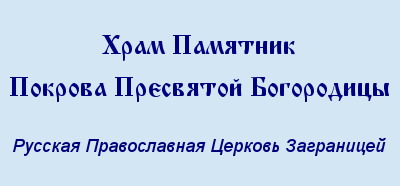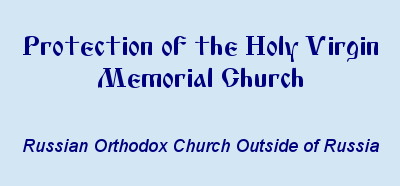Dear Brothers and Sisters,
Congratulations with the feast of the Resurrection of the Lord and with the forefeast of the Transfiguration!
Today let us briefly discuss the Third Ecumenical Council. As we have already seen, the first two councils were occupied with questions regarding the Holy Trinity and the relationship between the persons of the Holy Trinity – God the Father, Son, and Holy Spirit. We saw that both the Son of God and the Holy Spirit are consubstantial with God the Father, that is, the three persons of the one God are the same in their substance or essence. The following five councils were engaged with theological questions regarding not the Trinity, but the Son of God, Jesus Christ.
The first two councils clearly showed that the Son of God is truly God, but how is this to be understood, for Jesus Christ was at the same time a man who was born, lived amongst people here on earth, hungered, became tired, experienced anguish, suffered on the cross, and died; how can we understand these very different realities? In the first half of the 5th century, the new archbishop of Constantinople, Nestorius, offered his assumptions as to how this can be understood. It seemed to him that it wasn’t proper and was even blasphemous to speak about God being born, being a child, suffering, and dying. Therefore, he rejected the term ‘Theotokos’ or ‘Mother of God’ and insisted that the Most-Holy Virgin Mary was only the ‘Mother of Christ.’ According to the doctrine of Nestorius, Jesus Christ was a man in whom, in a parallel fashion, God was to be found. God came to dwell in Him, but it was not permissible to think that God had joined Himself to a man. God and man remained separate one from another. All those actions of Jesus Christ that were irreconcilable with the idea of God, such as birth from a woman and suffering on the cross, related to the human Jesus Christ. All that which was unnatural for a man – miracles, divine teaching, related to God, taught Nestorius.
The citizens of the capital were outraged by this new teaching, and went so far as to loudly contradict this heresy while the hierarch preached in the church. The defense of Orthodoxy was taken up by the Holy Hierarchs Celestine, the Pope of Rome, and Cyril of Alexandria, who wrote to Nestorius thrice, attempting to convince him that his ideas were contrary to the Orthodox faith. These attempts did not bear fruit, and therefore in 431 the Third Ecumenical Council gathered in Ephesus. This council was called by the Emperor Theodosius the Younger, the grandson of Theodosius the Great. It was attended by 200 holy fathers that confirmed the Orthodox teaching that Jesus Christ was at the same time both God and man. The human nature and divine nature are joined in the person of Jesus Christ. There are no two parallel beings or persons in Christ, but one Christ. The Holy Hierarch Cyril beautifully and clearly lays out this Orthodox teaching in his epistles. If you are interested, you can read them here: http://www.liturgies.net/saints/cyrilalexandria/nestorius2.htm, http://www.liturgies.net/saints/cyrilalexandria/nestorius3.htm. In his third epistle, the Holy Hierarch Cyril notes that in Christ there are two natures, “in the same sort of way a human being, though he be composed of soul and body, is considered to be not dual, but rather one out of two.” Therefore it is completely correct to call the Most-Holy Virgin the Mother of God, since she did indeed give birth to God.
This council and that dogma or teaching that the Lord Jesus Christ, our Saviour, is both God and man, are important for each one of us for the same reason that the first and second councils are important. For us sinful people, it is beyond our strength to live without sin, to become God-like, and, in such a way, to enter into the Kingdom of Heaven without an intercessor between mankind and God. Only He who can join together man and God can be such an intercessor. This cannot be simply a man, nor an angel, nor any other created creature for God by His own nature is incomprehensible. Only God Himself can join man to God. If, as Nestorius taught, God did not become a man, was not born, did not suffer or die on the cross, then we, that is the entire human race, do not have a firm union with Him and our hope for salvation is futile. On the other hand, if Jesus Christ is at the same time both God and man, as St. Cyril and the other fathers of the Third Ecumenical Council taught, which continues to be the teaching of the Church to this day, the most sublime possibilities are before us, about which even the angel cannot dream for themselves. We have an open door to the incomprehensible God Himself through His Son, who was incarnate and became the most real man, lived amongst us, and accepted voluntary death for the sake of our salvation.
Tomorrow the Church celebrates the Transfiguration of the Lord on Mount Tabor. On this hill, the Holy Apostles Peter, James, and John, as much as this was possible for them, sinful and earthly humans, saw the divine grace of their teacher Jesus Christ. Of course, it is not by chance that they were counted worthy to see this vision, but because they ascended a high mountain not only in a physical sense, but also in a spiritual sense: they left their worldly cares, sins, and passions behind, and tried to live for the sake of God. This feast clearly bears witness to the correctness of the Holy Hierarch Cyril’s teaching. Let us ourselves attempt to leave behind our sins, passions, and worries about earthly and temporal things so as to ascend Mount Tabor and see the glory of God.
priest Alexis







